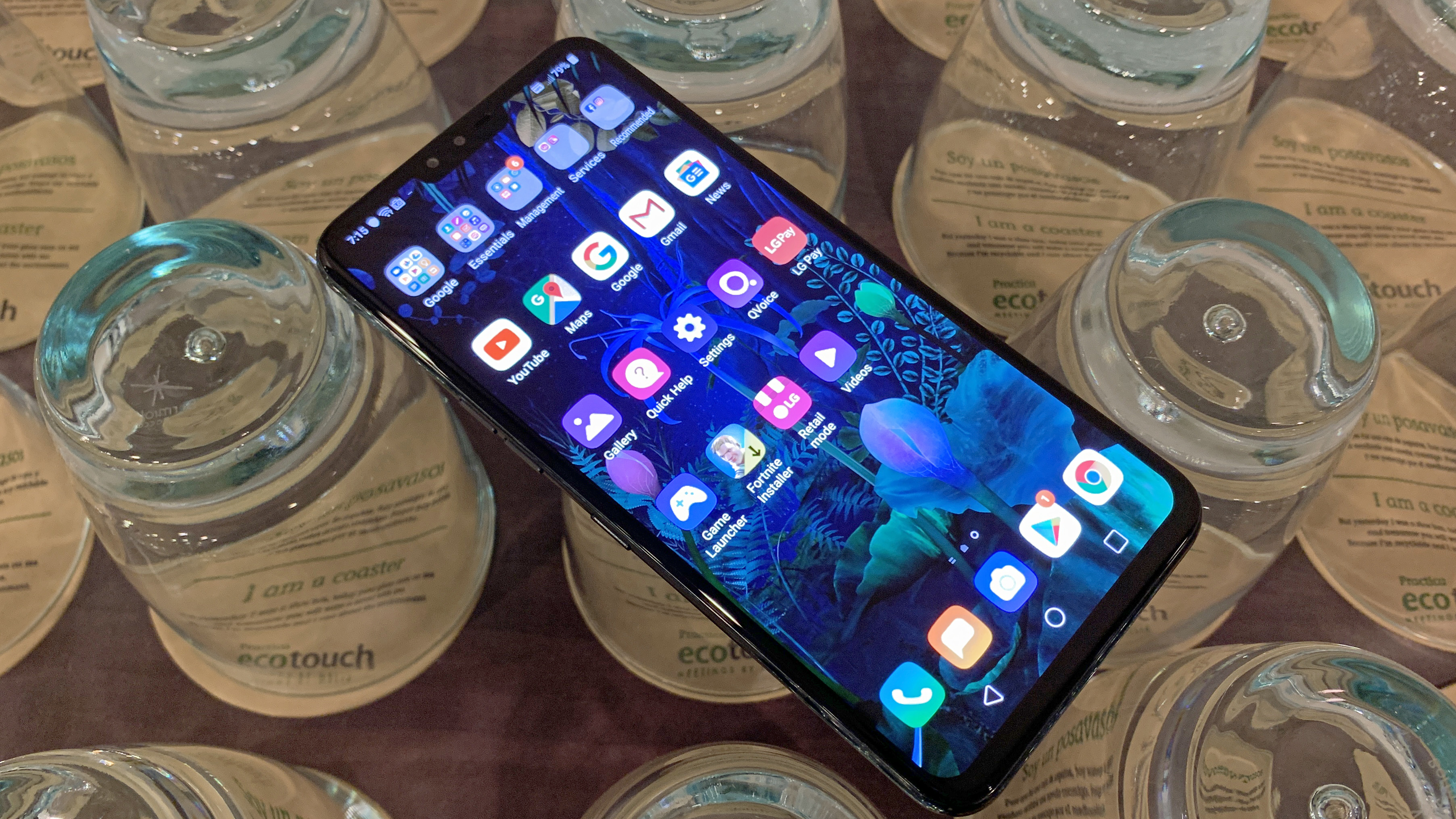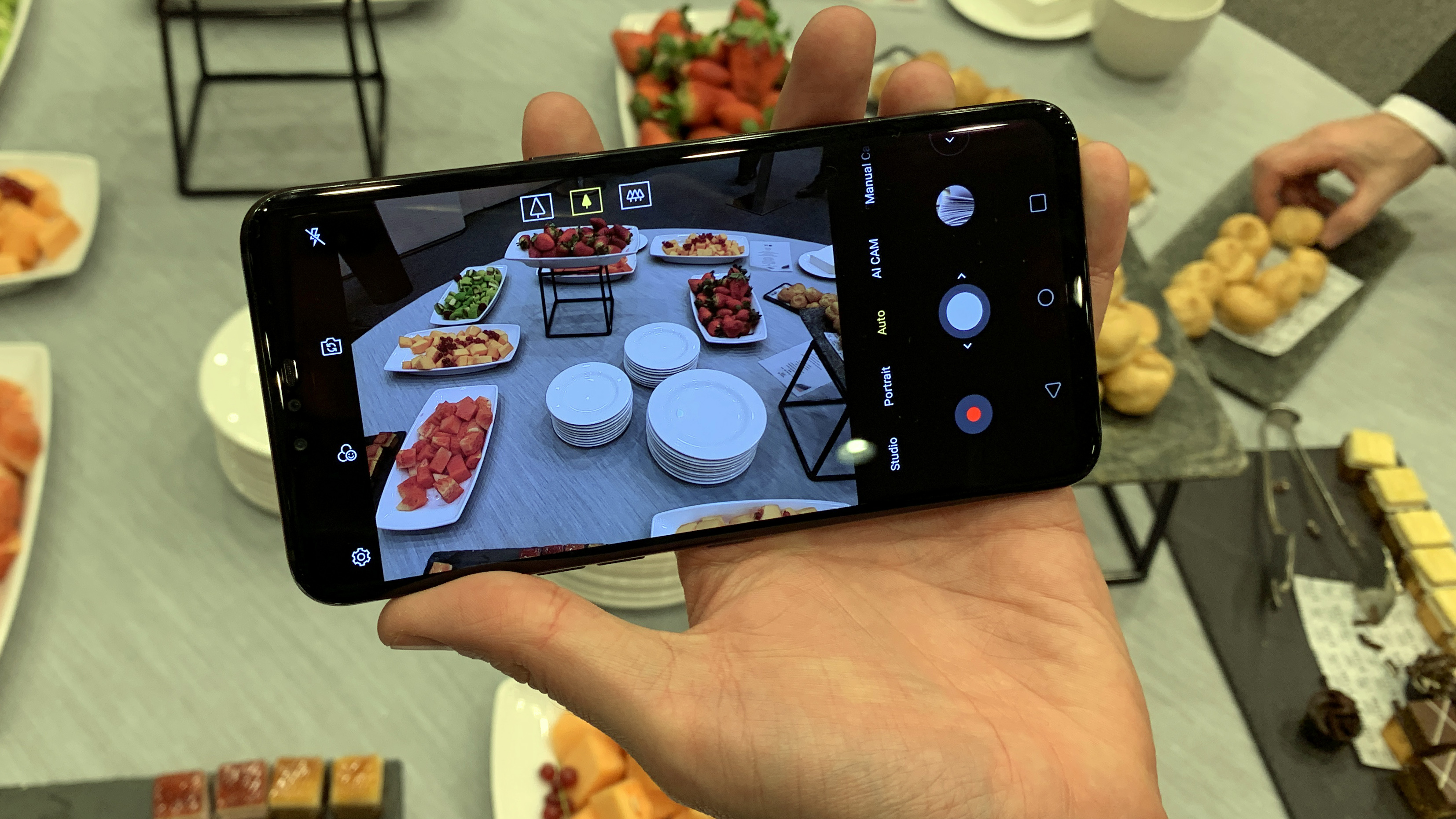Early Verdict
The LG V50 ThinQ has a lot going for it in many ways - but it still suffers from an over-complicated interface. At its heart it's a multimedia powerhouse with a camera that seems pretty strong - let's see if LG can refine things a little more before launch and improve the V50 to go alongside the futuristic 5G tag.
For
- Great photography
- Powerful innards
- Innovative second screen
Against
- Interface does too much
- Too much bloatware
- Plastic feel to chassis
Like its sibling, the LG G8, there's a great smartphone nestled inside the LG V50. From the impressive media capabilities to the large battery, combined with the 5G connectivity, on paper it might be hard to fault this phone.
LG does like to throw a curve ball though, and while the sum of its parts seemed strong in our testing of the phone at MWC 2019, if you're considering switching to the V50 from another brand there's still something that doesn't quite fit together.
If you're an LG fan though, and you're looking to replace something like the LG G6, you'll probably fall instantly in love with this phone - and that's before you even hear that you can slot a second screen on the side.
LG V50 release date and price
There's no word on the LG V50 price at the moment, but the V40 (with which this phone shares a number of characteristics) cost $900 (around £690 / AU$1260) at launch.
We're thinking that will increase somewhat, with the addition of the larger battery and the 5G connection adding a premium. We're not sure on the LG V50 release date yet either, as LG is working with carriers to get it out in the first half of this year.
Design and screen

There's a design heritage to LG phones that its fans seem to like, but as a generic smartphone layout it's not the most impressive out there. The smooth back feels a little to plasic in the hand, and is a fingerprint magnet (although that's hardly anything new for a number of smartphones out there).
For a premium, flagship handset from LG though, we did hope for something a little more alternative here - maybe upping the premium materials used to create a new hand feel.
Get up to speed with 5G, and discover the latest deals, news, and insight!

That said, LG has addressed one key element here: this is an IP68-rated handset with military-grade drop protection. To have achieved that while still making an attractive-looking handset, and if it stands up to the rigors of daily life then LG should be applauded here.
There are three pogo pins at the bottom of the phone on the rear, below the fingerprint sensor and camera array, and these are used to clip on the LG DualScreen attachment. This bolts a second screen onto the phone, and you can see more about it right here.

The rest of the phone is as you might expect a modern smartphone to be - picking this up in a store won't elicit any shocks. The power button on the right-hand side is a little hard to push in properly, but ultimately everything is just... fine.
The 6.4-inch OLED QHD+ display, which runs at 19.5:9 ratio, is bright and colorful, and it's hard to criticize it in any way really. There's a richness to the color and a clarity that OLED technology brings, and that's on top of the HDR-playback the phone offers.

There's a notch at the top of the phone, but LG offers you the chance to 'hide' it with a black bar either side, which is partly down to the high-contrast ratio of the OLED tech.
Camera and battery life

The LG V50's camera - or should we say, cameras, as it has a triple array - also seem pretty powerful in many ways. However, they're coming into a world where we're seeing artificial intelligence (AI) enhancements instantly improving the look and feel of photos, and high-powered, multiple sensors combining to offer a brilliant snap.
In our early tests, which admittedly were conducted indoors, we found the performance of all three snappers rather good.


There was a richness to the textures in the 'standard' camera, the wide-angle, 107-degree sensor lacked distortion at the edges (something previous LG phones were guilty of) and the telephoto zoom lens worked pretty much as advertised.
Doing some early low-light testing, the V50 was adept at handling the difference in conditions, although the AI camera gave everything an odd, yellow-ish tinge when it decided that it was indeed looking at night mode. That's not to say that the final version will look like this, as this was very much a pre-production unit we were checking out.
The front-facing cameras, which come in at 8MP and 5MP, wasn't the most impressive we've seen - the general look and feel of photos was OK, but experimenting with the portrait mode wasn't as accurate as we'd like.
You can add in colored backgrounds, but all that does is highlight the poor capability of cropping around hair, for instance. Again, given this is a pre-production unit, we won't castigate it too much, but the performance on the LG G8 camera with its time of flight camera was more impressive.

In terms of battery life, we weren't able to test this too fully on the LG V50, but with the larger 4,000mAh power pack inside (which is why it's tipping the scales at 183g and is now 8.3mm thick) should keep things powering on for longer.
With a Qualcomm Snapdragon 855 chipset inside pumping things along, things should be more efficient, but we'll need to test things harder to find out in our full LG V50 review - especially with a 5G connection.
Interface and media
Arguably the most maddening thing about the LG V50, and its current suite of phones, is the interface. Not that there's anything wrong with it, per se, or that it's too weak... there's just too much going on.
That's a real shame, as there's a lot going for this phone. Swiping right will see a helpful side menu from the home screen giving you helpful hints, a swipe down takes you to a handy search bar and the interface feels fairly similar to Android.
But there are dozens of apps in there that are too hard to fathom - LG TV, LG Pay and a host more, and all of them require a bit of tappery to work out what's going on. Nothing is too tricky, but equally nothing is really that intuitive.

This is mostly annoying as the musical performance of the phone is one of the most impressive elements - the Boombox capability when laying it flat on the table is truly pleasurable to hear, the DTS:X and Quad DAC modes really do make the sound through headphones incredible (and yes, it does have a headphone jack) and this could easily be one of our favorite phones for music.
But the LG V50 just doesn't quite tie that all up, make it easy to use this feature, with everything buried beneath toggles and switches.
Early verdict
The slight niggles we found in the LG V50, like an odd AI camera or funny portrait modes, can be explained by early software. But we can't expect the interface to change dramatically in the near future, and that's the key issue we've got here.
It feels like LG needs to focus on bringing its key features to the fore: sure, people will get used to the interface, but if there was more intuition inside then the amazing audio, strong camera, top screen and powerful innards would really be able to shine.
MWC (Mobile World Congress) is the world's largest showcase for the mobile industry, stuffed full of the newest phones, tablets, wearables and more. TechRadar is reporting live from Barcelona all week to bring you the very latest from the show floor. Head to our dedicated MWC 2019 hub to see all the new releases, along with TechRadar's world-class analysis and buying advice about your next phone.
What is a hands on review?
'Hands on reviews' are a journalist's first impressions of a piece of kit based on spending some time with it. It may be just a few moments, or a few hours. The important thing is we have been able to play with it ourselves and can give you some sense of what it's like to use, even if it's only an embryonic view.

